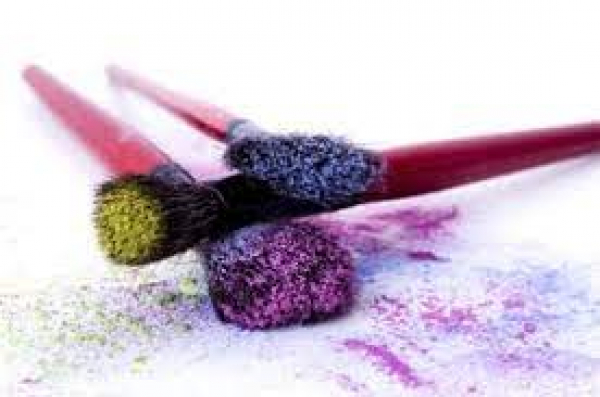The cosmetic pigments market is anticipated to reach US$ 1134.19 million by 2029 from US$ 608.21 million in 2020 owing to rising demand of personal care and cosmetic products which in turn affects the global cosmetic pigments market positively. Rising personal independence among women and their awareness towards using natural products has resulted in the change in purchasing pattern. The purchasing power parity has increased to a great extent expanding the demand of the overall industry. However, strict regulatory reforms are anticipated to critically impact the cosmetic pigments market from 2021 to 2029. Recent product launches by cosmetic pigments manufacturers has also aided the growth of the overall market.
Request for Sample Copy of This Report@ https://www.absolutemarketsinsights.com/request_sample.php?id=926
Product Launches that significantly affects the cosmetics and personal care market
In July 2021, Sun Chemical launched two new color travel effect pigments that is Reflecks MD Midnight Cherry and Reflecks MD Midnight Sapphire, to join its Reflecks MultiDimensions product family. These two blackened metallic-like effect pigments based on calcium sodium borosilicate, utilized innovative multilayer technology that delivers intense chroma, color travel, and sparkle. With a new patent-pending process, the absorption colorant is embedded within the coating, assisting in easier and faster formulation as well as benefitting the end clients by reducing the skin stains. Such technological advancements will aid the cosmetics and personal care market positively over the forecast period. New processes or technological advancements by the company is anticipated to shape the cosmetic pigments market significantly over the next eight years.
Organic segment is expected to witness considerable growth
Traditionally, natural pigments have not been terribly vibrant, bright, or dark, and the textures rarely rivalled those of the really luxurious conventional brands. However, technology, and a few cutting-edge cosmetic manufacturers/companies, is transforming natural makeup, taking the colors far beyond the dusty roses and neutral browns of the past and the textures into the realm of the sheer, shiny, delicate and subtle types. There are three types of organic color additives namely, synthetic dyes, lakes and botanical products. Lake pigment is made by reaction of a dye with an inert binder, usually a metallic salt. Many lakes are produced from FD&C colors, and are available in ‘high dye’ or ‘low dye’ compositions. Commonly, lakes work well in cosmetics because they do not bleed color. In addition, just like synthetic dyes, these pigments give off super bright hues. But, lakes are made with FD&C colors and, thus, have the same health and environmental consequences that synthetic dyes have and often exhibit carcinogenic properties, thus impacting the market growth in a critical manner. However, technological advancements and novel innovations point out towards environmental sustainability and is expected to propel the cosmetic pigments market over the forecast period.
Enquiry Before Buying@ https://www.absolutemarketsinsights.com/enquiry_before_buying.php?id=926
The Impact of Covid-19 on the Cosmetic Pigments Market
The COVID-19 pandemic has resulted in the temporary shutdown of production and manufacturing plants and related activities in most of the major countries across the globe. This has resulted in disruptions in the supply chain activities and simultaneously affected the growth of the cosmetic industry which resulted due to the raw material shortages and other inputs. Besides, it has slow down the growth of various sectors as most of the countries worldwide have resorted to nationwide lockdown as a measure to control the virus spread. Likewise, limited transportation, travelling restrictions, and halt of manufacturing activities have hampered the growth of the cosmetic pigments market, and the consumer purchase and usage patterns have changed in a huge way, which has limited the sales of various cosmetic segments. Additionally, some of the beauty companies, such as Clarins and Estée Lauder Companies Inc, have switched their manufacturing from beauty products to sanitizers as the latter is expected to be an important product for consumers in their daily lives. This has impacted the overall growth of the cosmetic industry, which ultimately has created challenges for the players operating in the cosmetic pigments market. However, online or via e-commerce have been a prime factor for the consumers as this path proved to be convenient and easier in the pandemic situation resulting in a positive demand for the personal care application and also aiding the growth of cosmetic pigments market.
Request for Customization@ https://www.absolutemarketsinsights.com/request_for_customization.php?id=926
Cosmetic Pigments Market:
By Composition
- Organic
- Inorganic
By Type
- Special Effect Pigments
- Surface-Treated Pigments
- Nano Pigments
- Others
By Application
- Lipstick
- Foundation
- Nail polish
- Hair Coloring
- Others
By Geography
- North America
- U.S
- Canada
- Mexico
- Rest of North America
- Europe
- France
- The UK
- Spain
- Germany
- Italy
- Nordic Countries
- Denmark
- Finland
- Iceland
- Sweden
- Norway
- Benelux Union
- Belgium
- The Netherlands
- Luxembourg
- Rest of Europe
- Asia Pacific
- China
- Japan
- India
- New Zealand
- Australia
- South Korea
- Southeast Asia
- Indonesia
- Thailand
- Malaysia
- Singapore
- Rest of Southeast Asia
- Rest of Asia Pacific
- Middle East and Africa
- Saudi Arabia
- UAE
- Egypt
- Kuwait
- South Africa
- Rest of Middle East & Africa
- Latin America
- Brazil
- Argentina
- Rest of Latin America
Get More Information@ https://www.absolutemarketsinsights.com/reports/Cosmetic-Pigments-Market-2021---2029-926
Contact us:
Contact Name: Shreyas Tanna
Phone: +91-740-024-2424
Company: Absolute Markets Insights
Email id: [email protected]

